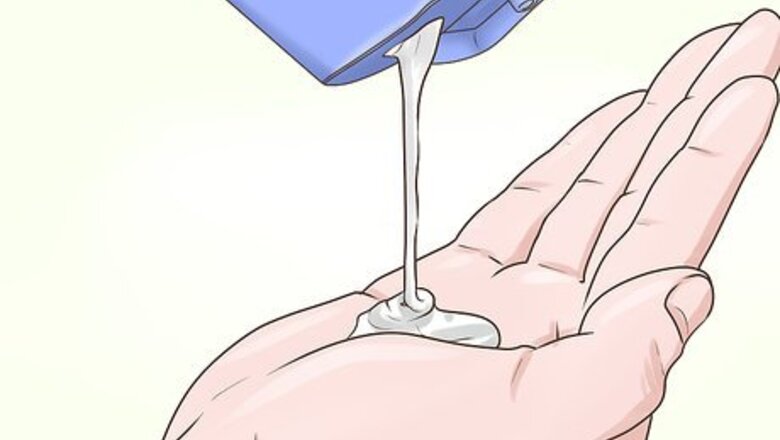
views
Backcombing

Start with clean, dry hair. Use a clarifying shampoo and don't follow it with conditioner in the weeks leading up to your dreading session. Forego products that are designed to moisturize your hair or make it sleek and shiny, since these make it harder for your hair to stay knotted during the dreading process.

Separate your hair into squares. Use a comb to separate your hair into even sections, and then keep them separated with small rubber bands. Each section will become a dread, so make them or small or as large as you want according to the finished look you have in mind. One-inch squares create medium-sized dreads. Go a little larger for big dreads, or smaller for many little dreads. The smaller the dreads, the more time it takes to create them. If you don't want it to look like you have even rows of dreadlocks, created a zig-zag or brick lay pattern of squares instead. When the dreads form, these patterns will look more natural than even checkerboard rows.
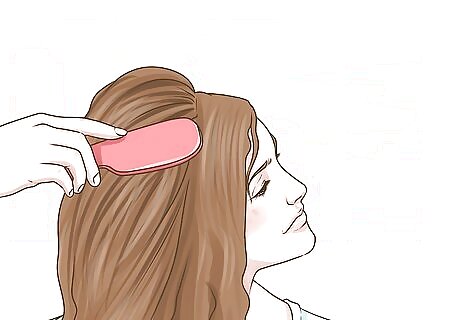
Backcomb the hair sections. Take a section of hair and place a dread comb or another fine tooth comb about an inch above your scalp. Comb the hair down toward your scalp, teasing it until some hairs get packed around the roots. Continue until the hair is tightly packed, then insert the comb an inch higher, and backcomb again. Keep doing this until the entire section of hair has been backcombed. Use your free hand to twist the section of hair as you backcomb it. Continue backcombing each section until your entire head of hair has been backcombed. Have a friend help if you get tired.
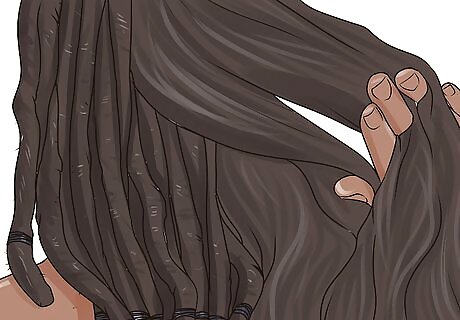
Secure the dreads. Place a small rubber band at the root and the end of each individual dread. Make sure the rubber bands are tightly secured, since they will need to stay in place until the dreads have "matured," which takes about 3 months.

Gel the dreads. Use a gel containing a natural ingredient like aloe to tame frizz and loose strands of hair. Smooth it onto each section of hair until all your hair has been covered.
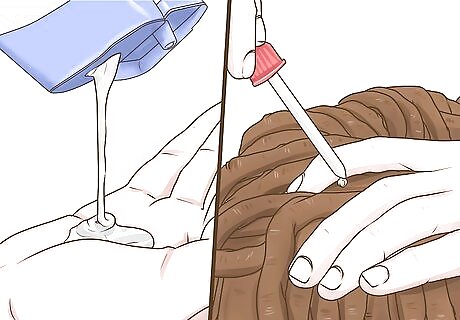
Maintain the dreads. Over the course of three months, the dreads will begin to lock into place. Aid the process in the following ways: Shampoo regularly. Use a clarifying shampoo and forego the conditioner. Wash your hair every few weeks to keep your scalp clean and avoid lots of tangles! Moisturize your hair with essential oil, such as lavender. Don't use food-based oils, which can cause your hair to smell. Tuck in the loose hairs. Use a crochet hook or tweezers to keep your dreads looking neat.
Natural Neglect
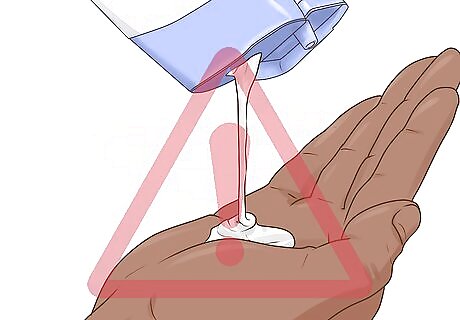
Change the way you wash your hair. Using a clarifying shampoo and skipping the conditioner creates the right conditions for dreads to begin forming. If your hair has too much oil or conditioning present, it won't begin to knot, or lock, into dreads. Avoid shampoo that is marketed as "moisturizing," since this shampoo usually contains conditioning agents that remain in the hair after rinsing. Stop using conditioner for at least a few weeks before you want to start dreading your hair.
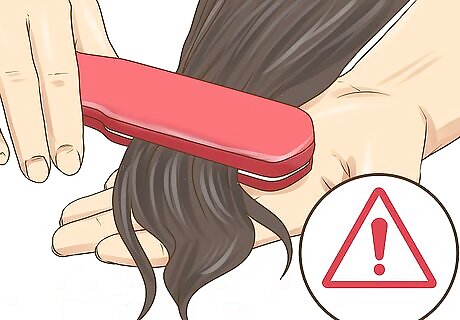
Stop straightening your hair. If you use chemical straighteners or another straightening technique, it will be much harder for your hair to start dreading. Let your hair be as natural as possible so your hair has the ability to knot.
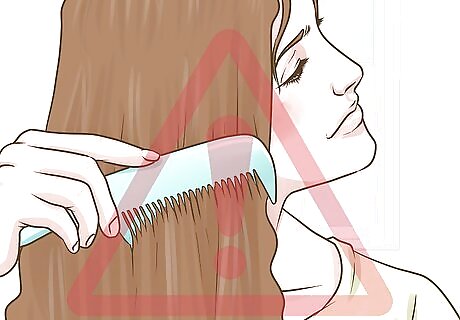
Stop combing your hair. Dreaded hair is simply hair that has knotted together into clumps. Every time you comb your hair, you prevent this from occurring by detangling it. When you're ready to dread your hair, put aside combs brushes and other implements you use to untangle your hair.
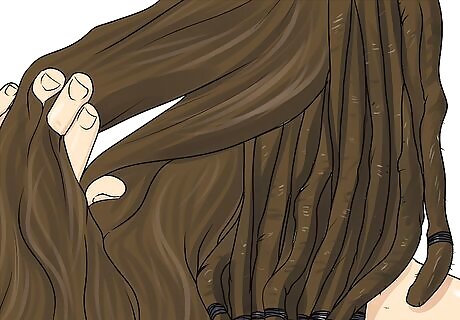
Separate your hair into sections. You can facilitate the formation of neater dreads by separating your hair into even sections as your hair reaches the point where dreads will begin to form. The sections don't have to be completely even, since the beauty of the natural neglect method is that it requires little effort.

Roll the sections. If you want to help your dreads along, roll them between your palms so they stay together. Rolling a few times a week will help create neater, more uniform dreads - but again, this step isn't necessary if your goal is to go completely natural.

Maintain the dreads. Once the dreads have formed, continue shampooing your hair regularly to keep them in good shape. If you plan to go camping or participate in an activity that could get the dreads dirty, wear a hat to keep them clean.
Twist and Rip
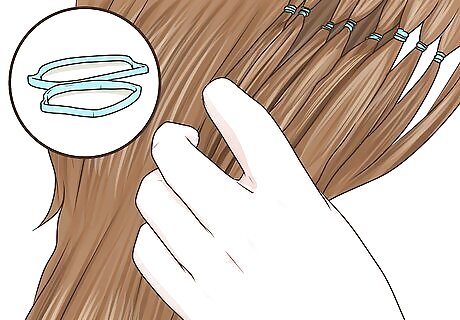
Divide your hair into sections. Create a small section for each dread you want. The size of the section will determine the size of the dread. Use a small rubber band to keep the sections apart.
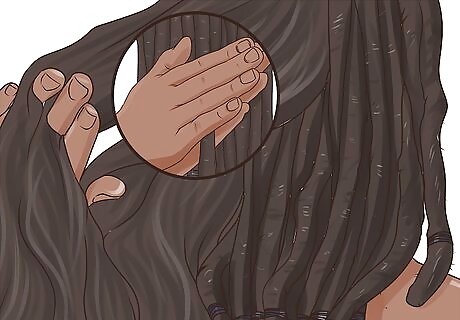
Twist a section and split it. Lift a section from your head and twist it, then use both hands to divide the end into two. Grasp one end in each hand and pull them in opposite directions. This action causes hair to ride up the shaft and get tangled and knotted. As you pull the hair apart, the knots will move toward the roots and begin to pack there. Continue twisting the section, dividing it, pulling it, and twisting it again until the entire section of hair has become tangled and knotted. Repeat until all sections of your hair have undergone the twisting, splitting and pulling from tip to root. EXPERT TIP Ndeye Anta Niang Ndeye Anta Niang Hair Stylist & Master Braider Ndeye Anta Niang is a Hair Stylist, Master Braider, and Founder of AntaBraids, a traveling braiding service based in New York City. Ndeye has over 20 years of experience in African hair including braiding box braids, Senegalese twists, crochet braids, faux dread locs, goddess locs, kinky twists, and lakhass braids. Ndeye was the first female of her tribe in Africa to move to America and is now sharing her knowledge of African braids passed on from generation to generation. Ndeye Anta Niang Ndeye Anta Niang Hair Stylist & Master Braider Twist and massage small sections to help kinky hair form free-form dreads. For free-form dreads on kinky hair, start at the bottom and twist in some gel or wax. Then gently roll and massage each section to help it take shape. Use a dread needle to loosely interlock the strands, letting them coil together into a strong dreadlock. This slow build up method works great for very kinky hair, allowing solid dreads to form naturally.
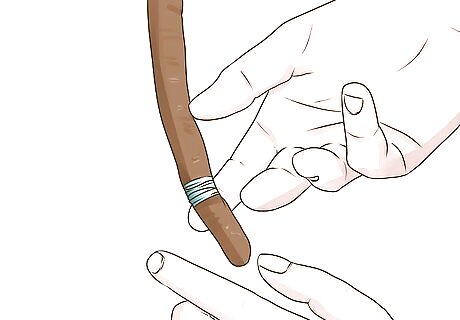
Secure the dreads. Place a rubber band at the root and the end of each dread. Keep these rubber bands in place for a few months while the dreads mature. After 3 months, remove the rubber bands; the dreads should be tight and smooth, and will no longer need to be kept secure.

Maintain the dreads. Use clarifying shampoo and an essential oil spray to keep your dreads in healthy shape. If you plan to spend time outside or in an area where your dreads could get dirty, wear a hat to keep them clean.



















Comments
0 comment